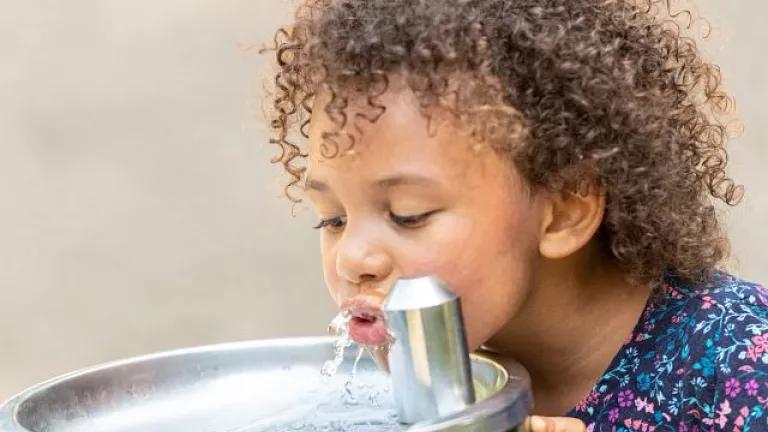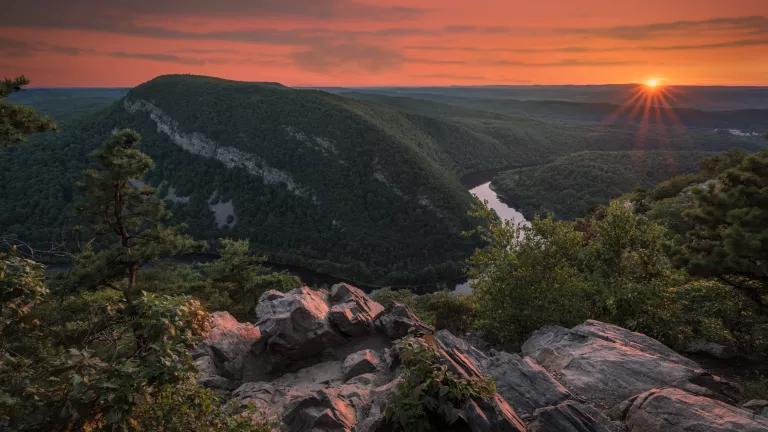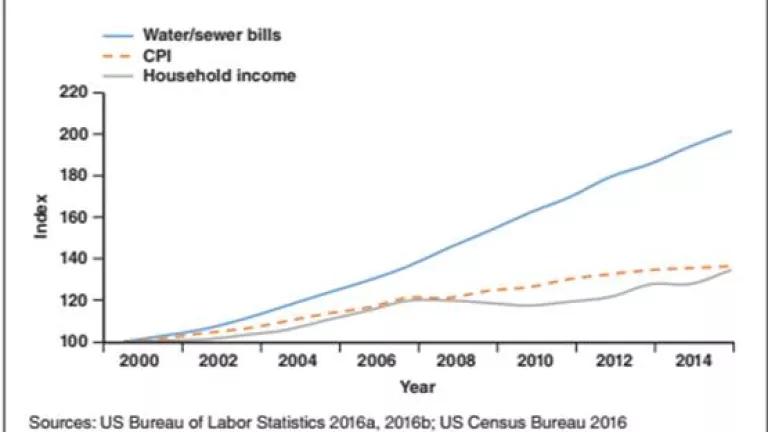Is NYC Content to Lead the Nation in Raw Sewage Discharges? The Moment of Truth Is Here—and the Jury Is Still Out.

There’s a dirty little secret when it comes to greening New York City. Even as NYC has become a leader in building green infrastructure to combat sewer overflows, it seems content to remain the nation’s leader in a much stinkier category: most untreated sewage discharged to waterways.
Almost every time it rains in New York, raw sewage pours out from up to 400+ discrete locations in all five boroughs. The Bronx River, Hudson River, and East River—making a comeback but not yet all the way there. Flushing Bay in northern Queens, home to Dragon Boat Teams paddling in the shadow of runways and stadiums, and Jamaica Bay in southern Queens and Brooklyn, an invaluable urban wildlife refuge bordered by a massive international airport and four sewage treatment plants. Gowanus Canal and Newtown Creek, those notorious open sewers passing under the BQE, fiercely defended by residents demanding a cleaner, healthier future.
These are places where people of all ages, ethnicities, and income levels live, fish, row, kayak, swim (or want to), engage in other activities that put them in direct contact with the water, and generally enjoy nature in our nation’s most densely-packed of cities.
Jamaica Bay with Manhattan skyline in background. Photo by Larry Levine.
But when they do, if it’s been raining in recent days, there’s a good chance they’ll find sewage in the water.
"Poonami" in Gowanus Canal
In these places and many others around New York City, polluted runoff from streets, parking lots, and rooftops, with nowhere to go but into overburdened sewers (and sometimes basements), triggers raw sewage overflows up to 75 times each year. During and after a rainfall—as little as one-tenth of an inch of rain—local waters are fouled with untreated human waste, to the tune of 30 billion gallons annually.
After decades of on-again-off-again legal battles, in 2012, the city and the New York State Department of Environmental Conservation reached a much-heralded agreement to address this chronic problem. The agreement—which NRDC and our partners supported, and fought successfully to make sure it would be enforceable by citizens—requires the city to do three main things:
- Create enough green infrastructure over 20 years to capture a one-inch rainstorm across 8,000 acres (over 12 square miles) of hardscape, keeping that rainwater out of the sewers and using it as a resource to green the city. The city’s initial estimates are that this would reduce sewage overflows by 1.5 billion gallons per year. Green infrastructure, such as green roofs, rain gardens, roadside plantings, porous pavement, cisterns and rain barrels, is not only a cost-effective way to clean up our waters. It can also increase urban green space, help reduce flooding, counter the urban heat island effect, reduce air pollution, cut heating and cooling energy costs, reduce potable water demands, and even create value for residential and commercial property owners.
- Curbside "bioswale" in absorbs runoff from Dean Street in Brooklyn
- Build a specific list of “gray” infrastructure projects, such as underground holding tanks and more powerful pumping stations. These specific projects, once completed, are estimated to capture and treat over 8 billions of gallons of additional sewage annually.
- Develop Long-Term Control Plans that identify additional, cost-effective green and gray infrastructure to reduce overflows further, as needed to achieve the “highest attainable use” in each water body. Under the Clean Water Act, that’s presumed to be “fishable and swimmable waters,” the goal set by Congress (with broad bi-partisan support) in 1972. These plans have rolling deadlines in different parts of the city, from 2013-2017.
The first two parts of the agreement—the green and gray infrastructure the city committed to build—along with improved sewer system maintenance and reduced water demand, are projected to reduce annual sewage overflows by about 12 billion gallons per year. That still leaves 18 billion gallons, including:
- hundreds of millions of gallons each into the Bronx River and Coney Island Creek;
- more than a billion gallons each into Newtown Creek and Jamaica Bay (including its tributaries);
- multiple billions of gallons into Flushing Bay and its tributaries; and
- over 10 billion gallons into the Hudson, Harlem, and East Rivers and New York Bay, collectively.
Sobering numbers.
That’s why the third part of the deal is so critical. The Long Term Control Plans (or LTCPs as they’re often called) are meant to close the gap. The LTCPs don’t necessarily need to eliminate all sewage overflows—as disturbing as that sounds for the biggest city in the world’s wealthiest nation—but they do need to make sure all New Yorkers can enjoy the city’s 600+ miles of shoreline, and the wide open spaces of our rivers and bays, without fear of getting pinkeye or diarrhea from touching the water.
There’s just one little problem. The city’s Department of Environmental Protection, which has lead responsibility for developing and implementing the city’s water quality plans, doesn’t seem to see it that way. While they’ve been forging ahead with the first two parts of the deal, they’ve been treating the LTCPs as just a legal hoop to jump through—a paper exercise in justifying little or no further cleanup beyond what’s included in items #1 and #2. In fact, as described below, the City has even taken the state to court to fight for its “right” to continue polluting!
The Clean Water Act demands better. New York State officials, to their great credit, have been demanding better. EPA, behind the scenes, has backed up the state in demanding better. Most importantly, New Yorkers deserve better. And, as explained below, they’ve been raising their voices and demanding it too.
Here’s a more detailed rundown of where things stand. NRDC and our partners in the Storm Water Infrastructure Matters (S.W.I.M.) Coalition are fighting to make sure the city keeps its promises.
1. Green Infrastructure
New York City has a legal deadline approaching next year to meet its initial green infrastructure targets. The city has focused mainly on ramping up construction of thousands of “bioswales”: curbside plantings that absorb street runoff. That’s a huge win for dozens of neighborhoods, especially in Brooklyn, Queens, and the Bronx where these will be located.
But the city’s most recent Green Infrastructure Annual Report—while showing progress on many fronts—suggests an urgent need to accelerate a much wider range of initiatives to meet green infrastructure targets. As of April 2014, the city anticipated that the projects built, under contract, or substantially designed by December 2014 would be only half-way toward an interim 5-year target, the deadline for which arrives only a year from now, in December 2015.
The City’s early green infrastructure successes should provide ample motivation to do more—to say nothing of the City’s legal obligations. The NYC Department of Environmental Protection recently announced that some of its green infrastructure projects are outperforming expectations, in terms of reducing flow into the sewers. Earlier studies by the Department of Parks and Recreation and Drexel University also showed green infrastructure over-performing—indicating that green infrastructure can help not only reduce sewage overflows, but also neighborhood flooding. That’s great news. It shows that green infrastructure is a cost-effective approach that helps revitalize communities and clean up our waterways. And it’s reason to double-down on currently-planned investments.
2. Gray Infrastructure
The city submits quarterly progress reports to the state, which indicate that the City is on-track with many of the sewer infrastructure upgrades included in the 2012 agreement. They’re behind schedule on others for various reasons, including Sandy-related delays and procurement challenges. The State and City seem to be negotiating in good faith to make sure these projects stay on track without substantial delay; we’ll know more with each successive quarterly report.
3. Long Term Control Plans
This is where things seem to be coming undone. The city submitted its first LTCP in 2013, to address overflows in Alley Creek (a tributary to Little Neck Bay at the border of NYC and Nassau County). The creek flows through Alley Pond Park, the second-largest park in Queens. The state rejected the City’s plan, which proposed adding nothing to the City’s prior commitments, allowing 132 million gallons of sewage to continue flowing into the creek each year. The state rejected the plan as insufficient. That state found that, among other things, the City had failed to consider more cost-effective options to further reduce overflows, which would make the creek safer for recreation for more of the time.
Remarkably, the City responded by suing the state, arguing that the state was demanding too much pollution reduction, too much clean water. (The case is still pending. See the bottom of this page for links to the legal papers.)
It’s one thing when corporate polluters spend millions on legal battles to fend off environmental enforcement—that is, sadly, par for the course in our country. But it’s another thing entirely when our local government officials take to the legal ramparts, rather than working collaboratively to solve the City’s biggest water pollution problem.
Unfortunately, the same pattern seems to be repeating itself in the City’s next set of overflow reduction plans. For the Hutchinson River and Westchester Creek in the Bronx, the City held several public meetings in which it presented only the most cursory information about its intentions and invited comments within 2-3 weeks. Based on those meetings, it was clear that the city was again seeking to avoid any significant, new pollution reduction projects. The S.W.I.M. Coalition submitted comments that:
- assailed the City’s failure to provide meaningful opportunity for public input in the development of the city’s plans;
- called for an unbiased assessment of options, aimed at finding the most cost-effective approaches to improve water quality;
- demanded a full evaluation of green infrastructure opportunities—on both public and private property—as an integral part of the planning process; and
- called for a holistic approach that tackles multiple water pollution sources affecting the same water bodies—especially sources like polluted stormwater, which is also within the city’s control but is currently subject to a separate regulatory process that’s currently pending.
The City’s Hutchinson River plan, submitted to the state just 11 days after public comments were due, failed even to acknowledge these comments and criticisms. As with the Alley Creek plan, the Hutchinson River and Westchester Creek plans proposed little or no investment beyond pre-existing commitments. The plans would allow annual sewage overflows of 300 million gallons in the Hutchinson River (including 50 million gallons that would receive “disinfection,” but not full treatment); and 289 million gallons in Westchester Creek.
Next up is Flushing Creek in Queens, which runs from Flushing Meadows Corona Park to Flushing Bay. The presentations at the Flushing Creek meetings suggested the city intended to follow the same path yet again, proposing little or no additional improvements. Again, based on only a thumbnail sketch of their plans and rationale, the City allowed about 3 weeks for public comment. The S.W.I.M. Coalition submitted another letter this week, raising the same concerns again.
Sewage dumped into Flushing Creek literally sends people to the hospital. The Empire Dragon Boat Team is a S.W.I.M. member group comprised of forty breast cancer survivors who paddle in Flushing Bay 3 to 4 times per week. They submitted their own comments this week, too, demanding fishable, swimmable waters. The team’s experiences paddling in the sewage-befouled bay were profiled in the New York Times and in a local Queens paper earlier this year. As the Times wrote:
The water itself is hardly enticing, tending to be brown and smelly. Paddlers say that during their twice-a-week practices, they routinely see tampons, condoms and other garbage floating in the water. All members wear either goggles or glasses to protect their eyes. If paddlers are splashed in the eyes or mouth, the team has flushing kits handy.
Afterward, the women, often reeking from the smell of the bay, rush home to shower and wash their clothing. Sometimes the bacteria count is so high that practice is canceled.
One member, Carmel Fromson, who had two occurrences of breast cancer in the 1990s, said team members have taken to sitting away from other passengers when riding the subway home. Ms. Fromson said she had to be treated at a hospital with antibiotics for an eye infection after being splashed during a practice.
The Flushing Creek plan is due on Dec. 31. Will the City continue to dig-in for years of legal battles to defend its supposed “right” to discharge 1.2 billion gallons of sewage annually to Flushing Creek? And billions of gallons more around the City, including in your favorite waterway? Or, will our local officials change course, and do what it take to ensure healthy waters for a healthy future?
The moment of truth is now. And the jury is still out.
Post-script: You might wonder why this is all happening now. Shouldn’t this problem have been dealt with decades ago? Under the U.S. EPA’s CSO Policy, all of the nearly 800 cities with sewer overflows were expected to have had these plan completed about 15 years ago. In New York City, it took legal action in 2003, by environmental groups including NRDC, Riverkeeper, Long Island Soundkeeper, and NY/NJ Baykeeper, to force the state to set deadlines for New York City. And across the harbor in New Jersey, for anyone keeping score, deadlines are just now being set for 21 cities to develop LTCPs. Those plans are expected to be due in 2018. As in New York, it was legal action, by NY/NJ Baykeeper and Hackensack Riverkeeper, that forced state officials to act.




